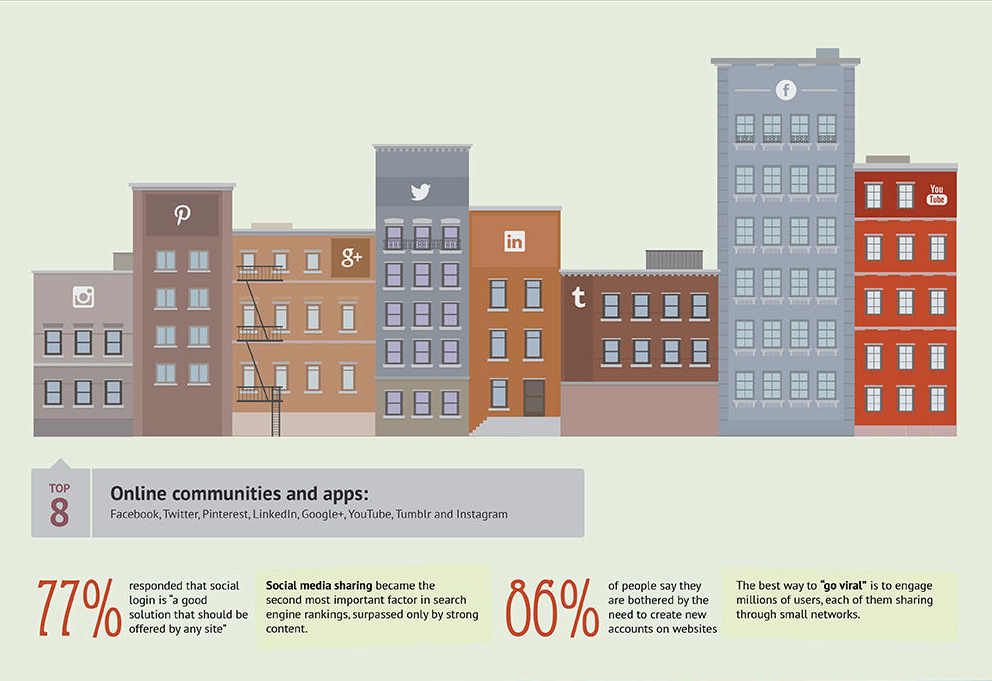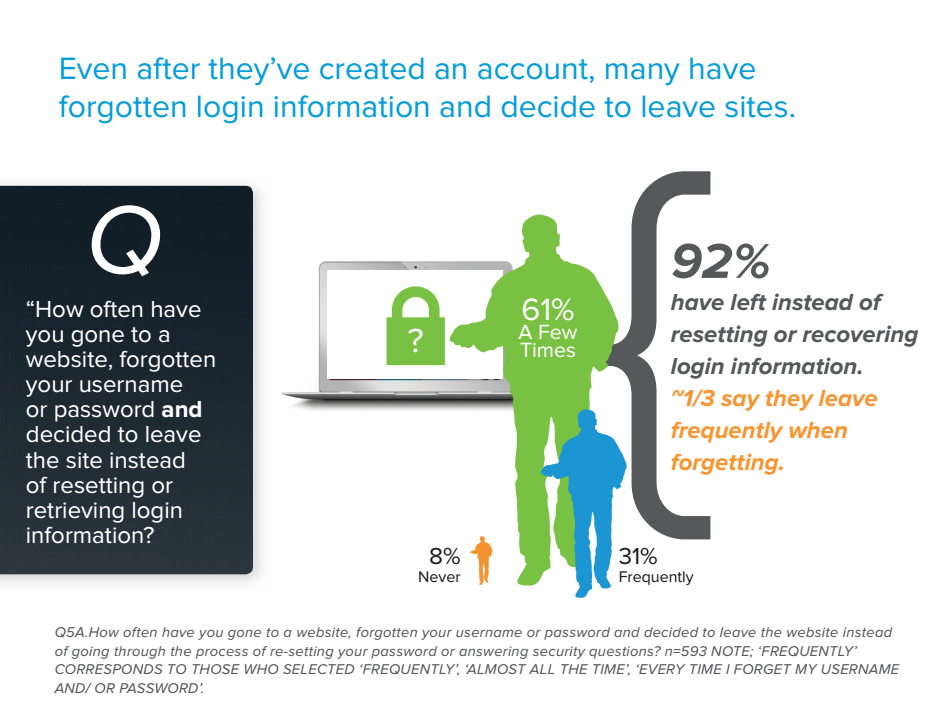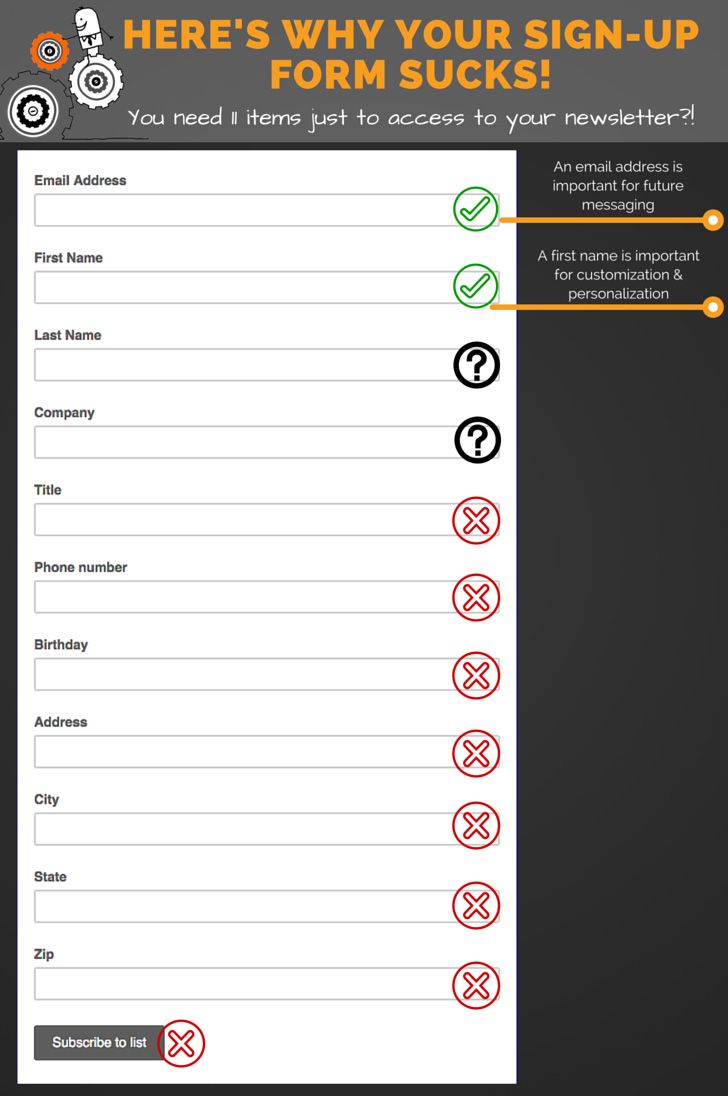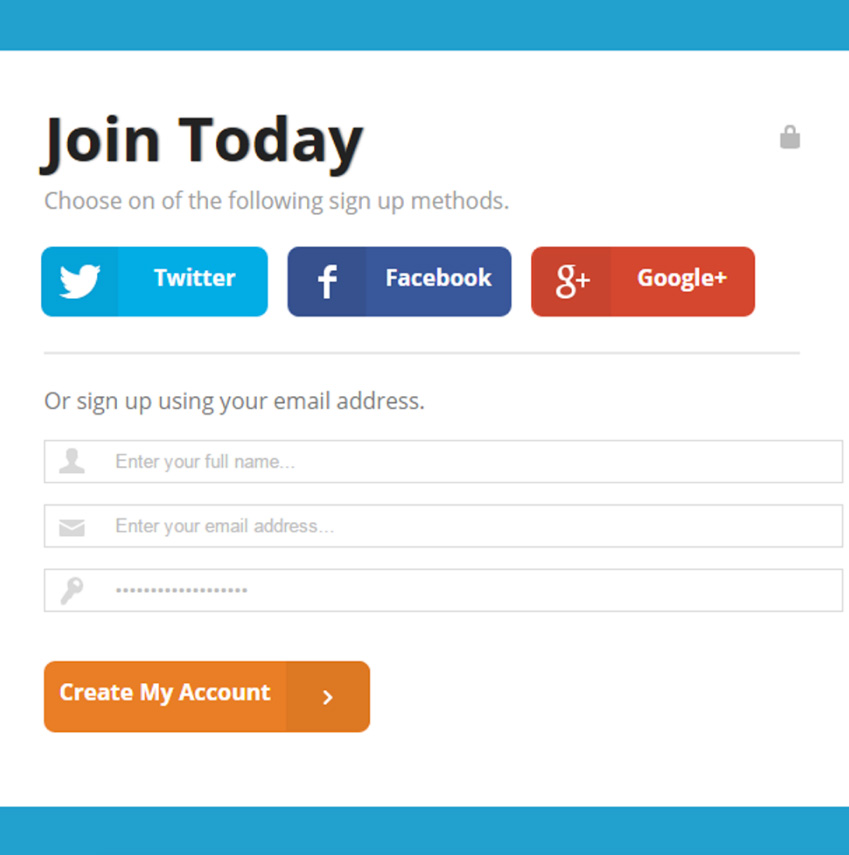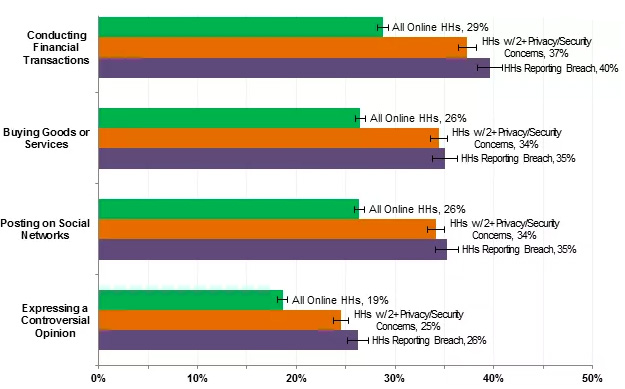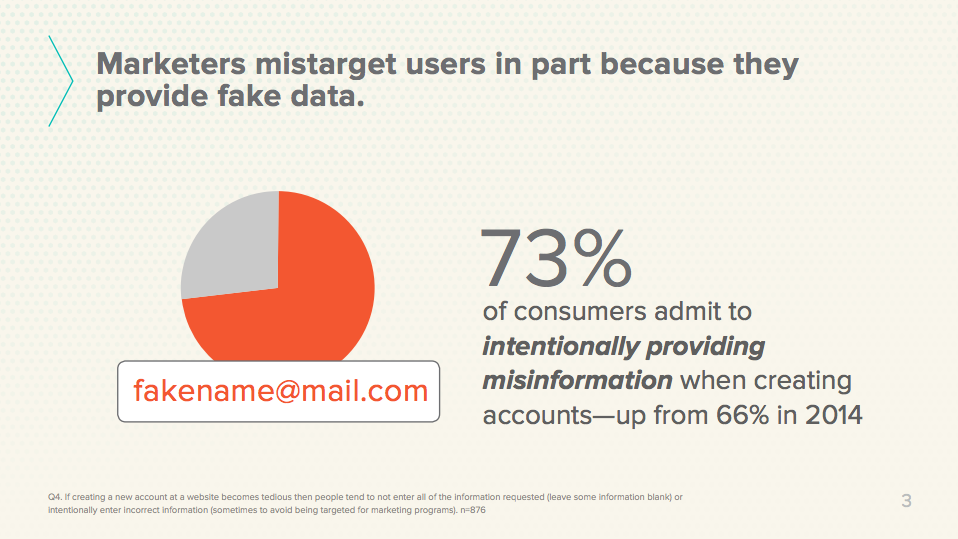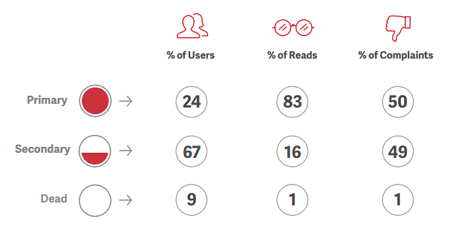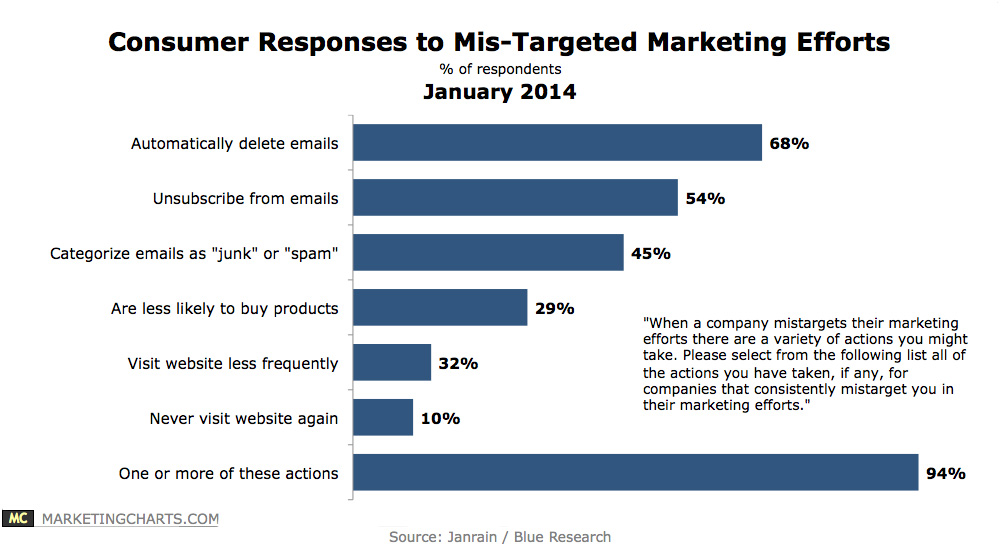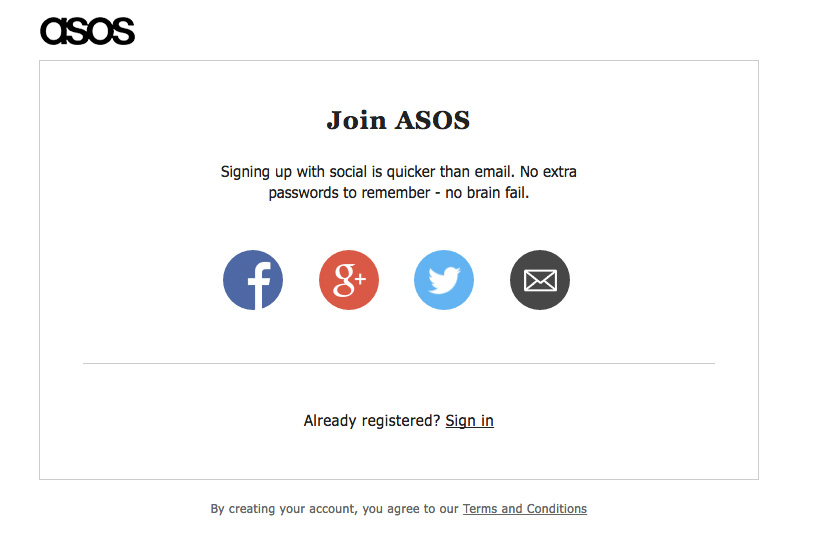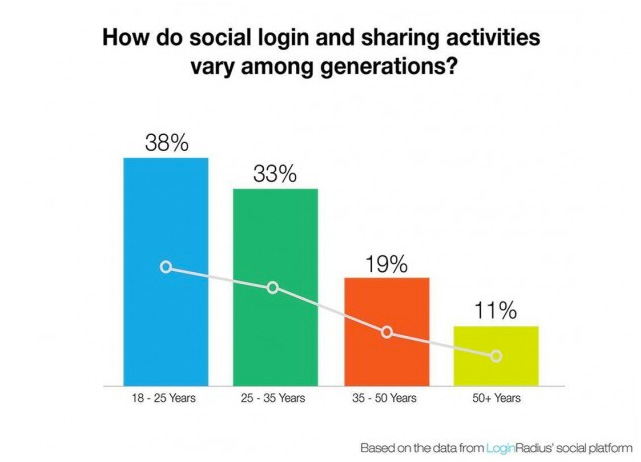Signup is one of the biggest tipping points for e-commerce. Persuading users to sign up and log in gives you access to way better tracking so you can improve your personalization efforts, and it gives you more data about your customers. Additionally, if you have social network details your social marketing efforts will be more effective.
But the signup process is also one of the biggest sticking points. Most users don’t sign up. There’s no direct, immediate payoff, so even if you sweeten the deal with offers, build a big button and make it super easy and quick, you’re still not going to get most of your visitors.
Social Signup Reduces Friction
Inventing a new password to forget (or using the same one they use for everything else), typing out their email address for the hundredth time, completing the captcha… seriously, you’re bored, and you’re just reading about it. Having to do it just so you can buy a pair of pants, a drill bit or a tube of sunscreen is nothing short of vexing. LoginRadius’ Leah Klingbeil calls this, ‘Password Fatigue.’
It’s the sort of experience users bounce off of – 54% of people said they’d click away and go to another site rather than fill in a registration form. So most sites let you buy as a guest now – so that’s what most folks do. And those who did sign up often forget their passwords; when they do, they’ll overwhelmingly just give up and leave.
So you settle for guest purchases. You got a purchase, which is great and all, but you didn’t get the contact details you need for email and social campaigns to remarket, reactivate, offer, persuade and engage. And the user loses out too – they’re not getting your offers!
Social signup and login solves that problem.
With social signup, users don’t face this:
Just this:
Multiple screens that involve sometimes-case-sensitive typing, captcha displays, passwords, can all be replaced with a single click. Obviously that’s an even bigger advantage on mobile.
Trust and Security
Online security is a bigger issue than ever before. Almost 40% of Americans feel unsafe making financial transactions online – bad news for any e-commerce business.
And it’s not just techie types who think of hacked sites, stolen details, identity theft and fraud. Online security is increasingly a broader consumer concern. How can we assuage these fears? Social signup and login provides one answer.
Social signup puts customers in control of their own data.
When you sign up to Buystuff.com, makeapurchase.co and coolindieonlineshop.dk, you hand over details to each of those companies. They store those details – until they lose them, or until they get hacked. People are increasingly fatalistic about this and increasingly unwilling to believe that companies will ensure their data privacy. Even if all you hand over is your email, name, age, date of birth, street address (for deliveries) and you make all your payments by PayPal, that’s still plenty for a fraudster to get their teeth into.
Sign up to those stores with social signup and your data is warehoused by the social network of your choice, and you control who has access to it. Social accounts including Facebook, Twitter and Google let users check which sites have access to their data and delete those they no longer use.
For Twitter, you’ll find yours at Profile > Settings > My Twitter Data. See anything you don’t like? Revoke that app’s access in the Apps tab.
For Facebook, look for Where I’m Logged In in your Security Settings tab.
For consumers, that’s way better than fraud-friendly information languishing in the database of a company they haven’t done business with in years. But it delivers big bonuses to your business too.
Access and Accuracy
When people sign up, they’re in a hurry. They give information grudgingly. Sometimes it’s misspelled. Sometimes it’s false. And sometimes they’ll give you their third-string email that they never look in anymore. Most people have around two emails, some as many as four or five.
There’s a big difference in open and read rates from primary to secondary email:
Which email do you think is usually linked to someone’s Facebook account? Bingo: social signup gives you primary email access too.
Social signup gives you data you can use to personalize your messaging as well as your website experience. Getting that correct data is seriously vital for communicating with your audience:
Irrelevant messages don’t just get ignored: they trigger ‘anti-conversion’ behaviors like unsubscribing. And one in ten respondents said they’d never visit your website again if they got an irrelevant marketing message from you. Social signup gives you the data to personalize your messaging so that doesn’t happen.
And it gives you access to your customers’ social networks, meaning you can join in their conversations and encourage them to share and advocate for your brand among their friends.
Case Study: Asos
Online fashion house Asos did $1.9m in revenue in 2015; that puts them squarely in Gartner’s SMB classification. They’re also growing fast, with revenue up 18% from 2014. How? Cleaning up their checkout saw Asos’ abandonment rate fall by 50% in 2015.
Asos implemented social signup in early 2015. Click on ‘sign up’ on he Asos homepage and you’ll see:
The value to the consumer is clearly stated: No more lost passwords, no more typing your email address, quick and simple, nothing to go wrong.
But hidden within that is the value to the business.
Sign up with Twitter and you’ll agree by default that Asos can read tweets from your timeline, see who you follow, follow new people, update your profile and post tweets for you.
That’s going to ring alarm bells among an older audience, who might feel more threatened by Asos having that much access to their Twitter account; younger customers are more likely to see consensual sharing of data as a fair trade for personalization.
And finally, unlike the majority of sites that allow social signup, Asos have implemented it at the checkout stage where it fits naturally into the customer journey and alleviates pre-checkout friction caused by sign-up or sign-in.
Conclusion
Social signup solves two of the biggest conversion snafus in e-commerce: it smooths the notoriously upset-prone path to checkout, and it relieves you and your customers of the least-popular page on your site: the registration page. It’s not a cure-all: not everyone will want to use it, and it’s difficult to test and optimize social signup. But it should definitely be a part of your strategy to tie your social and onsite marketing closer and optimize your website for leads and conversions.
About The Author:
Richard Bayston is a freelance blogger and copywriter covering tech, digital marketing and content strategy for SMBs. I’ve also been known to write on health and fitness. Find out more: Richard@RBCopywriting.com or @RBCopywriting. The rest of my time is spent arguing amicably with my wife and Googling the answers.
*Featured Image Source

